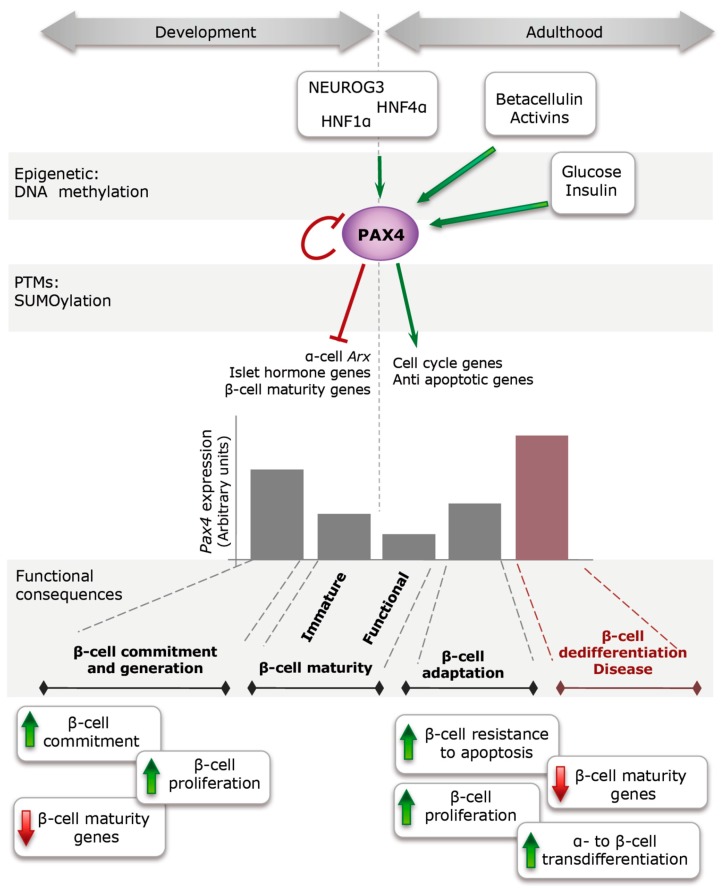Figure 5.
PAX4 regulation and action during development and adulthood. During embryonic development, NEUROG3, HNF1α and probably HNF4α activate PAX4 expression in progenitor cells inducing their commitment towards β-cells through inhibition of other islet cell master factors (ARX and islet hormone genes). Later on during development, PAX4 expression is tune down to allow full expression of β-cell markers (MAFA, GLUT2, insulin) conferring full functionality to β-cells during early post-natal life. During adulthood, increases in the insulin demand induce Pax4 expression to confer a more plastic behavior of the β-cells (increase in apoptosis resistance and prone to proliferation) that allows the adaptation of the islets to the new metabolic demands. However, if Pax4 stimulation is maintained for long term, it can cause the dedifferentiation of the β-cells (decrease in mature β-cell markers), with subsequent inability to regulate glucose homeostasis.

